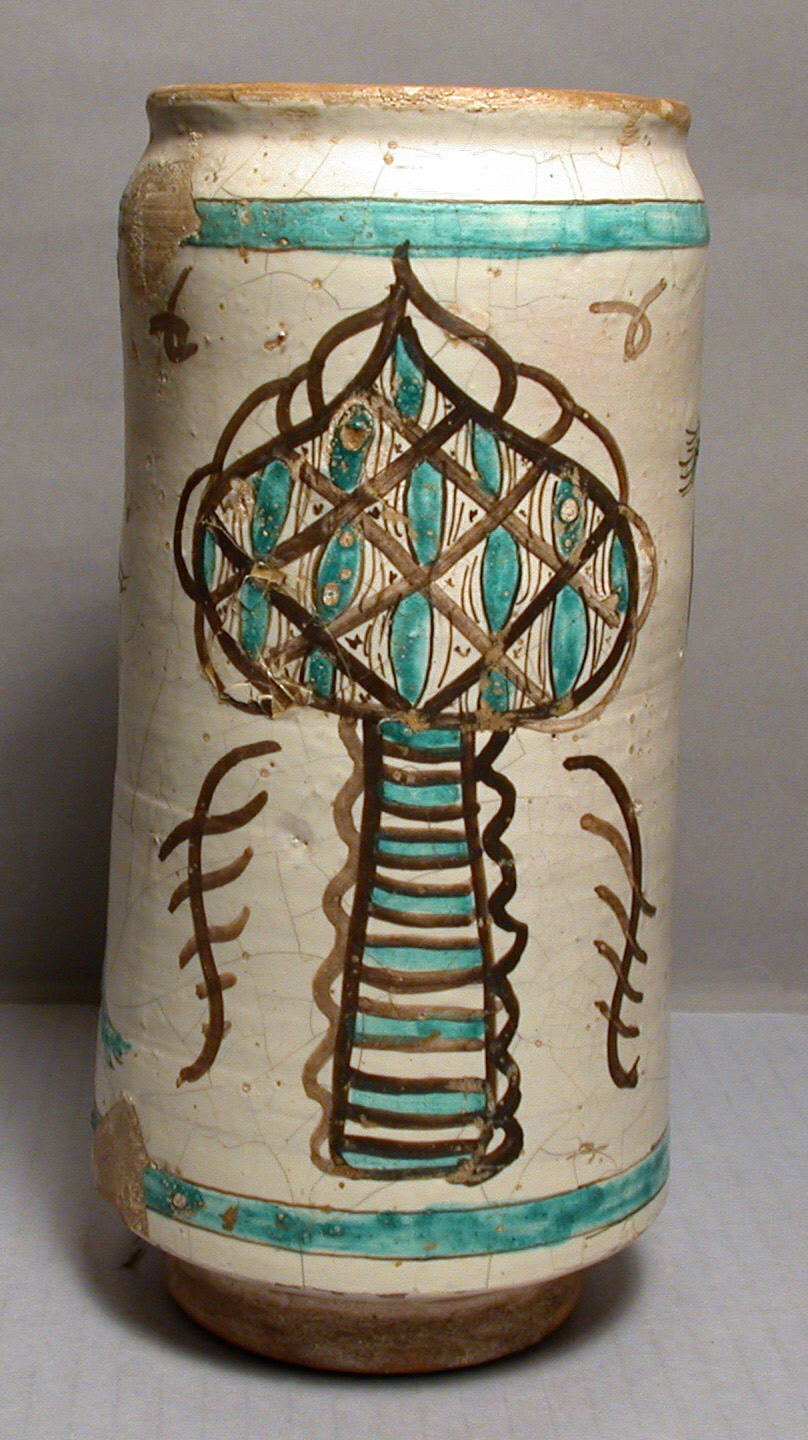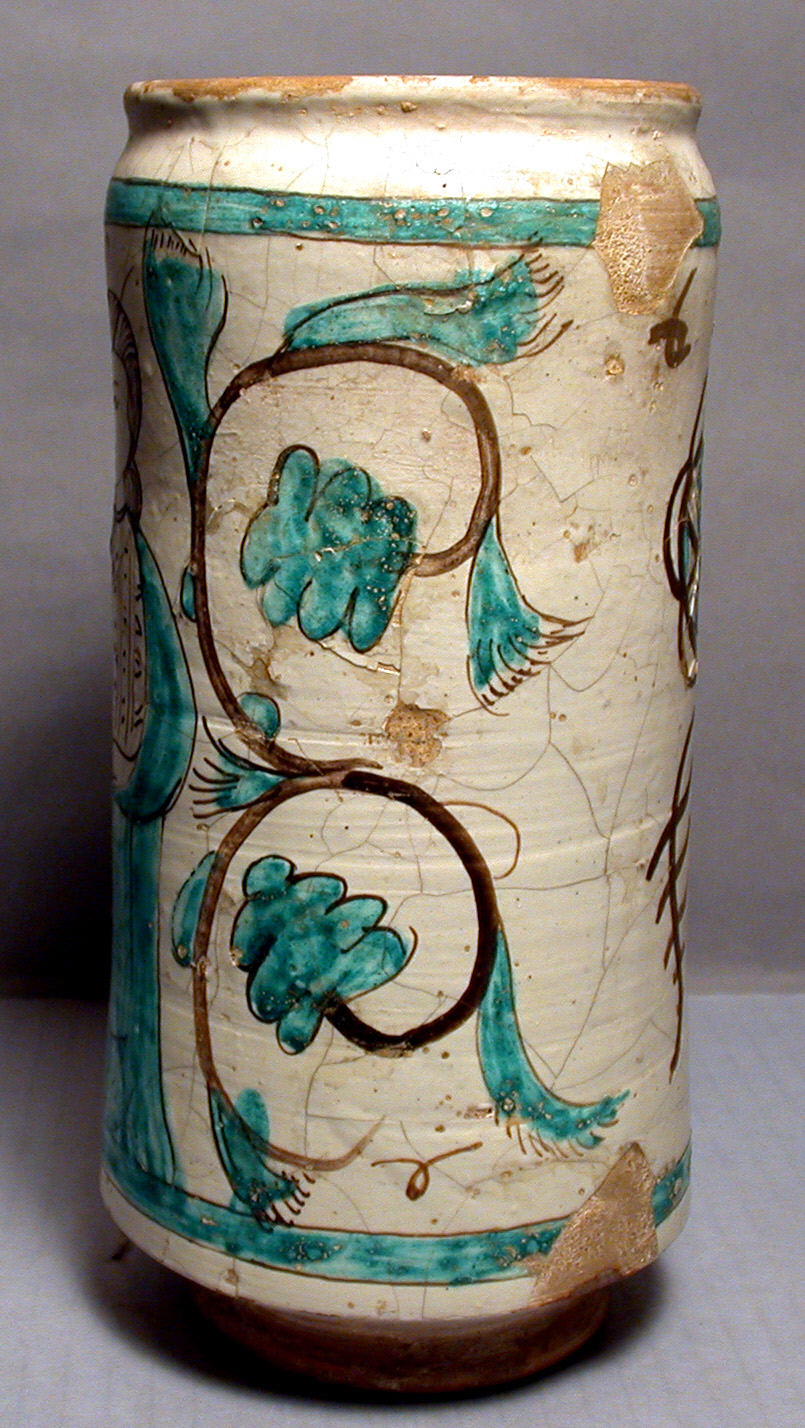Pharmacy Jar
Not on view
This ceramic vessel is of a type known as a pharmacy jar, based on the common use of vessels of this shape in pharmaceutical storage. One half of the cylinder is decorated with a standing female figure dressed in a long robe, her left arm caught in the folds of her garment. Her raised right hand holds a small object resembling a leaf, perhaps alluding to the medicinal contents of the jar. The opposite side of the vessel depicts a stylized tree. The jar was likely made near the city of Valencia on Spain’s Mediterranean coast, which was celebrated for this type of ceramic ware, known as lusterware. First developed in Iraq, the lusterware technique made its way across the Islamic world to the Iberian Peninsula, which during the Middle Ages had a substantial Muslim population. Eventually, this specialized knowledge was shared between Muslim and Christian artists, who often worked side-by-side in ceramic workshops. This jar provides strong evidence of interfaith interaction, not only through the technique, but also through the tree motif decorating one half of the vessel. The so-called "tree of life" had spiritual significance for both Muslims and Christians during the later Middle Ages and testifies to the artistic language shared by the two faiths.
Due to rights restrictions, this image cannot be enlarged, viewed at full screen, or downloaded.
This artwork is meant to be viewed from right to left. Scroll left to view more.





